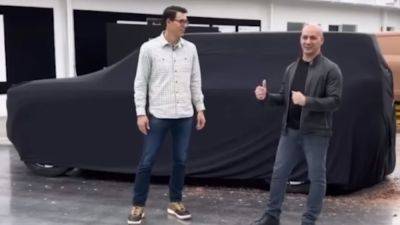Abandoned History: The 2014 VIA VTRUX Pickup, a Forgotten Silverado
A brief moment in EV history passed us by about a decade ago, when the little-known VIA Motors introduced their lineup of VTRUX hybrid-electric vehicles. Your author managed to hear absolutely nothing about this brand or its vehicles until a post on Twit-X a couple of weeks ago. This sort of topic is the very reason Abandoned History exists. Let’s learn about the world of VTRUX.
The story begins with a company in Utah called Raser Technologies. In 2009 Raser displayed a Hummer H3 that claimed to return up to 100 miles* on a gallon of fuel (*in local daily driving) when it was outfitted with the company’s range-extender plug-in electric powertrain. Raser went looking for investors and executives, and someone to mass produce their powertrains.
Enter newly retired GM Vice Chairman Bob Lutz. Lutz brought with him other investors, as well as executives and engineers from GM. In short order, VIA Motors was established as a separate entity from Raser Technologies in 2010. Lutz joined in 2011, promptly after he retired from GM. The newly established company planned to introduce a whole line of PHEV vehicles, and their industry connection for completed passenger vehicles to convert (Lutz) was already in place.
Lutz was a staunch supporter of GM’s plug-in hybrid of the time, the Cruze-based Volt. The same basic principle was used by the VIA powertrain, and would electrify current General Motors vehicles. VIA saw an opportunity to capitalize on a new electrified vehicle market, while simultaneously taking advantage of proven Chevrolet underpinnings.
To that end, the VTRUX line was announced circa 2011. Each vehicle would use the VIA plug-in powertrain which turned the existing gas engine into a range extender. Different to the Volt’s operation, all VTRUX models were a series hybrid: There was no mechanical connection between the gas engine and the wheels. That’s different to today’s PHEV models, where the gasoline and electric engines work together to power the vehicle as needed, while the gasoline engine also charges the batteries.
The V6 or V8 engine operated only as a generator to supply electricity to the electric drive unit once batteries were empty. The traditional







